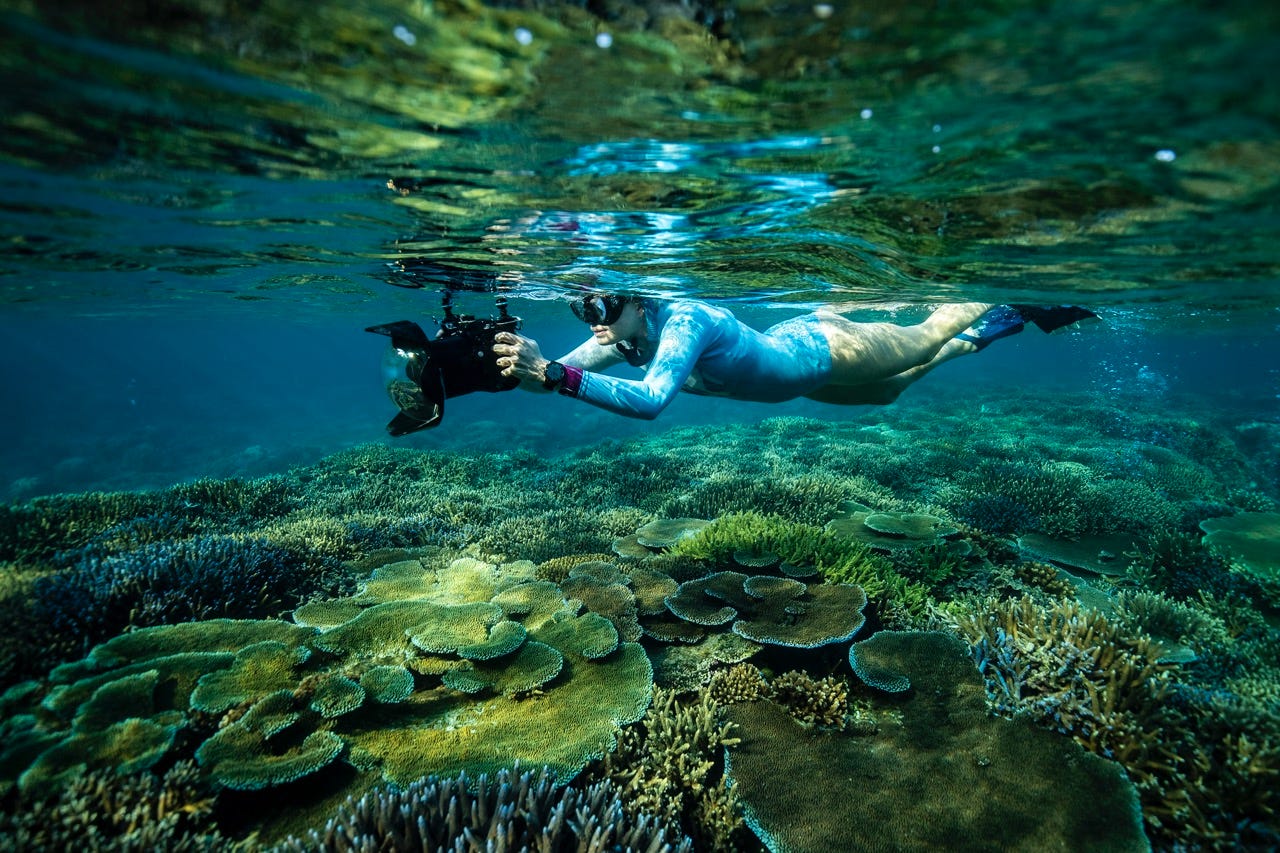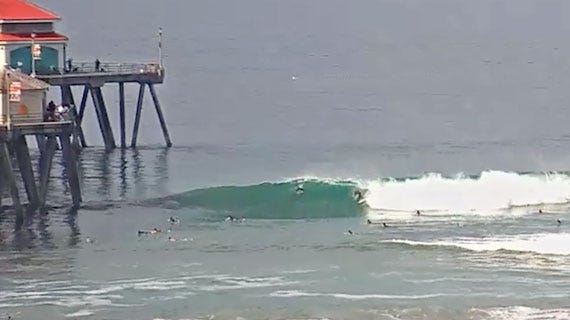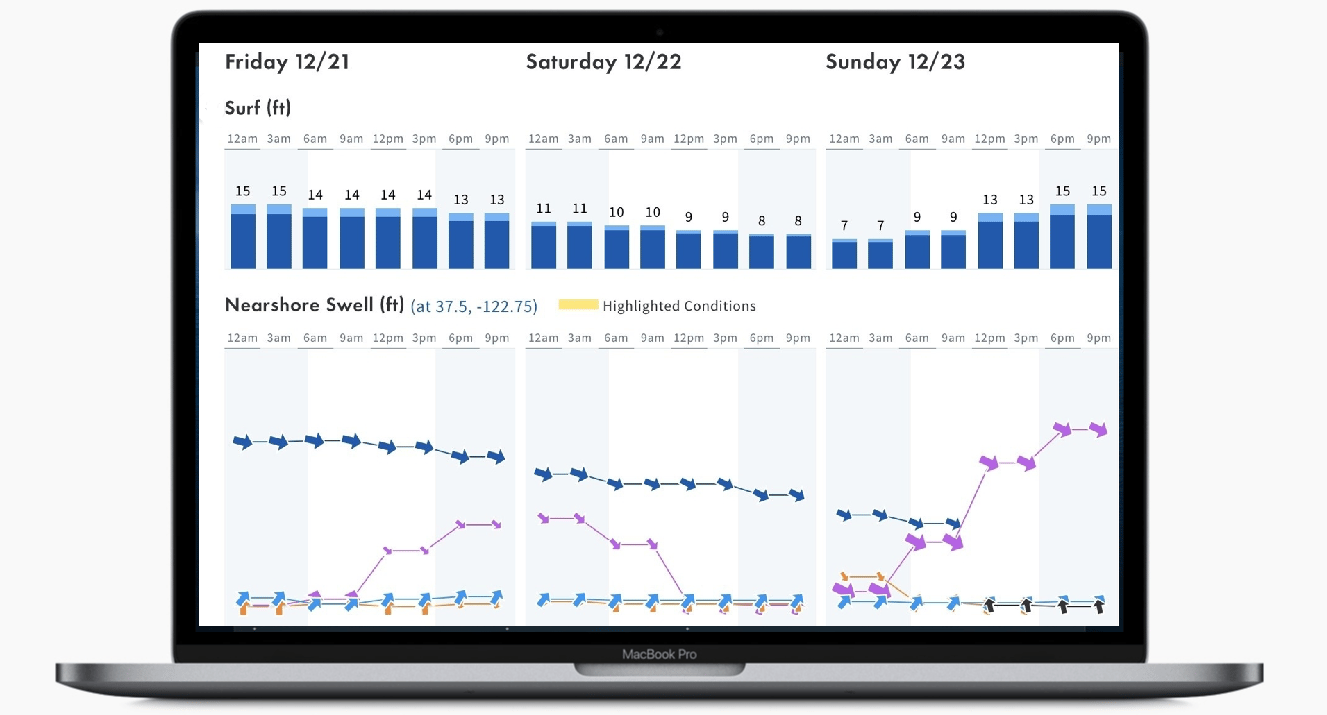Surfing waves of data
How Surfline keeps surf lovers everywhere informed with their homegrown expertise and trove of unique data
Did a friend send you this newsletter? Be sure to subscribe here to get a weekly post covering the technology behind products we use every day and interesting applications of data science for folks with no tech background.
Happy September! Today’s post is inspired by my long weekend adventures in sunny San Diego, spending hours at sea, surfing some great waves. A good weekend of R&R left me inspired to take a look into the world of ocean data that keeps the surf community moving, focusing on Surfline, the biggest fish in the surf data platform sea.
And, for a life update — I’ve started a new job! I’ve joined Primary Venture Partners as an analyst on their investment team, investing in seed stage startups being built in New York City. It’s a dream come true to join this team and be immersed in NYC’s flourishing startup community. I’ll be growing my skills in a variety of markets, but my investment focus will be AI & ML, dev tools, supply chain/industrials SaaS, and GTM SaaS tools. With that being said, I’m eager to write longer-form about innovative topics, share my investment journey, and highlight awesome startups in Day to Data, so there may be some changes to the newsletter in the future! And, if you are or know a founder, investor or operator I should chat with, please reach out!
967-SURF
“Prior to Sean, we were in the dark ages”, says surfer Aaron Pai, of Sean Collins, who would one day found Surfline. Surfing is a never ending chase of being in the right spot at the right time to catch the perfect wave, and that effort has gotten a lot easier with the evolution of surf forecasting.
Sean was a pioneer in surf forecasting. In the 1980s, he used paper maps, created new technology, and built impressive techniques to predict where swells were occurring. He spent lots of time in Baja, Mexico, using old weather fax machines to generate satellite images of ocean swells and build his unbelievably reliable wave forecasting system. In 1983, Sean was approached by a phone reporting company called Surfline to be their chief forecaster. He would make daily calls, charging $1 a call, with forecasts and reporting that were “like a drug” to surfers, says Kevin Meehan. Two years later, Sean left to start his own rival company Wavetrak, then four years later bought Surfline, staking his claim as the kingpin of surf forecasting. Later in the 90s, Surfline.com was launched and their first surf cam was set up in surf city at Huntington Beach.
The ocean of data
There’s a vast set of sources for data that powers a company trying to predict what will happen in oceans all around the world at any given time. Sean Collins may have started with hand drawn maps, fax machines, and oceanography textbooks, but the field of ocean data, and the technology to gather multi-dimensional information, has evolved tremendously.
Mapping some of the biggest breaks in the world
Have you ever heard of bathymetry? Dr. Cliff Kapano and the team at MEGA Lab sure have. The practice of measuring the depth of water is used by scientists and oceanographers to better understand how the ocean floor and reefs beneath the surface impact the waves forming above. An estimated 80% of the ocean floor is unmapped. The Mega Lab was created to map coral reefs around the world to better. understand the oceans that sustain our world.
In 2021, the team began to map the Bonzai Pipeline, one of the world’s most famous waves. The structure of the reef beneath Pipeline is what makes the wave so idyllic. The team is taking photographs using high resolution underwater cameras, then feeding them into computer vision models that transform the images into 3D representations of the ocean floor. By better understanding the composition of the reef, they can work to preserve the reef and hence preserve the wave for surfers to come in the future.
The team later mapped Cloudbreak, an absurdity of a wave located in Fiji. They mapped 5,000 square meters of ocean. floor using GPS, aerial photography, and underwater drone technology. Underwater ROVs (remotely occupied vehicles, more regularly called underwater drones) were initially developed by the Navy, but now commonly used by teams at Surfline and research institutes to explore the depths of the ocean. Teams like that at Mega Lab use modernized ROVs, equipped with high-res cameras, sometimes tethered to a boat at sea, and full of sensors to capture valuable 3D data in especially hard areas for divers to navigate.

Buoys bringing the data
Surfline’s proprietary swell model, LOLA, was the result of Surfline founder Sean Collins and William O’Reilly, a researcher at Scripps Institution of Oceanography. The goal of LOLA? Translate satellite data into understandable information around wave heights in the oceans in real time. LOLA is powered by data from offshore buoys managed by the National Data Buoy Center that detect swells and isolates smaller swells that can refract and shift as they move to shallower water.
In 2018, Surfline retired LOLA to roll out LOTUS. The new model updates far more frequently (every six hours vs. every hour). It’s able to predict the arrival of swell more accurately, validating the model output in real time by referencing buoys and expert forecasters. They’ve reduced errors from LOLA by 25% since LOTUS has been put into motion.
Owning the surf prediction market
What enabled Surfline to own the market?
Proprietary knowledge of the founder, who was embedded in his community of users: Sean was a surfer. He knew surfers. Surfers trusted him and felt that his knowledge was better than anything out there. He was an early adopter of surf forecasting and much of the techniques used today are thanks to him.
Human experts: Surfline has expert forecasters that provide daily analysis, checking out the waves first hand and providing their personal view on what is best for your next move. It provides a human touch to a data driven platform, making it even easier for beginner surfers to interpret forecasters.
Data moat: Surfline has over 35 years of data, with 20+ years of their own reporting providing immense value to the company’s ability to learn from past weather conditions and give surfers an analysis they can’t find anywhere else. They also own cameras getting 24/7 data feeds of loads of breaks all across the world that give them an edge other companies don’t have.
Large social following and community: It’s no surprise that content from the most beautiful beaches, showing the biggest surf, and the incredible community around it has gained the company over 2M Instagram followers, and partnerships with major brands like Ripcurl.
“The most important thing to do when starting any weather-related forecast, not just a surf forecast, is to build situational awareness. … We analyze local and distant observed surface winds, waves, and weather patterns through things like satellites, buoys, and, of course, surf reports and surf cameras. — Mark Willis, Surfline’s global forecast development manager and Atlantic forecast chief
Thanks for reading this week’s Day to Data! I hope you enjoyed reading about the incredible world of surf forecasting, ocean data, and the company Surfline has built. Nothing like a surf edition of Day to Data to wrap up the summer. Have a great week!






Makes me want to take up a board, and “shoot some curls.” Can’t wait to get back to San Diego. Love the clear, non-technical exposition, almost casual conversation, not a lecture.